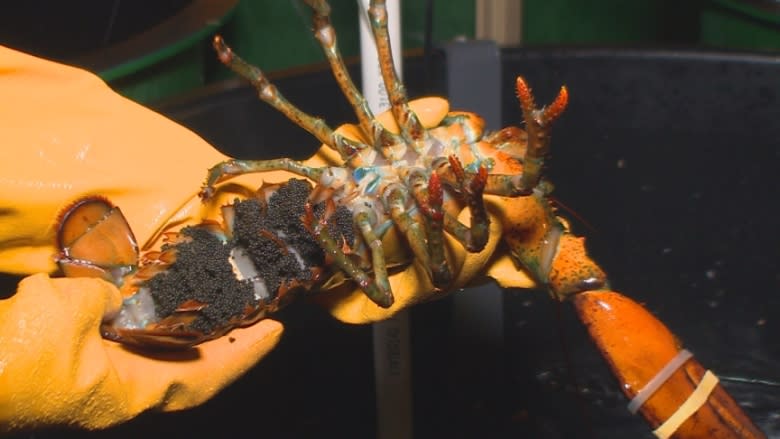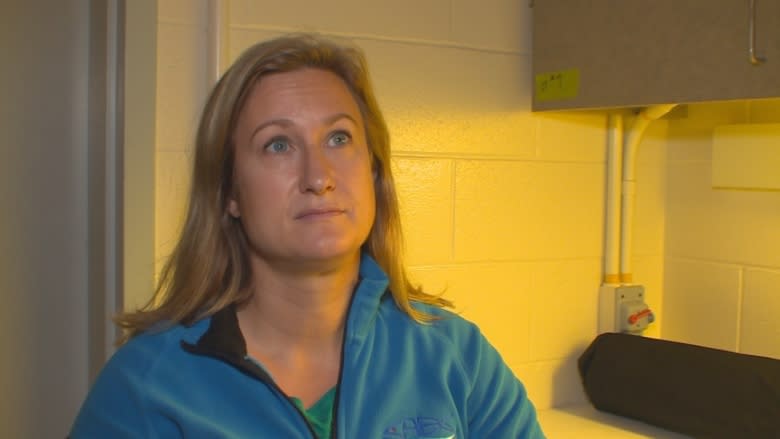Lobster experiments help predict future for $1B fishery
Researchers in Saint Andrews are trying to predict how climate change will affect the future for lobster by manipulating the conditions they face in several experimental tanks.
More than 100 female lobsters are undergoing a range of experiments at the St. Andrews Biological Station.
In a dark, buzzing room, three Department of Fisheries and Oceans researchers are mirroring potential changes lobsters will face with changes in ocean temperature and acidification and with diet limitations.
According to DFO, the Canadian lobster fishery is worth more than $1 billion a year, but the department predicts significant decreases in lobster catches in the next decade.
With this research, scientists hope to help those managing fisheries prepare for and withstand future climate conditions.
Research scientist Helen Gurney-Smith said the work is trying to predict what these changes will do to lobster offspring and future populations.
"They are sensitive to changes in water temperature," she said.
What is unknown, however, is what climate change will mean for lobster eggs.
Right now, 108 females at the lab have been split into tanks studying three different pH treatments, two temperature treatments, and two diet treatments.
Carbon dioxide is added to the water to mimic emissions, which the ocean normally filters on its own. Gurney-Smith said in the real world the ocean can't keep up with an increase in vehicle and industrial emissions, creating an acidified environment.
Depending on the treatment used in the lab, Gurney-Smith said, the females are either producing fewer eggs or resorbing them.
"So that means that they're not actually spawning," she said.
Gurney-Smith said a study in 2015 in the Bay of Fundy linked a rise in temperatures to a decrease in the number of egg, but the egg stages haven't been looked at as much.
But Gurney-Smith said a study looking at the effect of carbon dioxide levels and temperature on lobster larvae yielded interesting results.
"The larvae actually grow bigger, but the survival is less," she said. "So you may have a few individuals which are larger, but not as many as you would have in a normal population."
This part of the St. Andrews study is scheduled to take nine months, but Gurney-Smith said the researchers want to secure funding to expand it another two years.
"We're hoping to keep them for a transgenerational study, so that we can actually look at the offspring of these animals," she said. The researchers want to see if lobster mothers see any benefit from adapting to future scenarios, or if their offspring are likely to be successful.
Gurney-Smith and other scientists will be speaking about their work at the St. Andrews Biological Station this Saturday.
Between 10 a.m. and 3 p.m., members of the public are welcome to attend a free open house.




